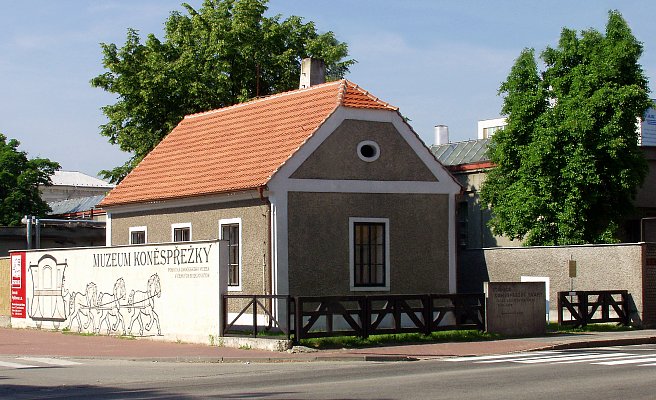
The main reason for the construction of the horse-drawn railway from České Budějovice to Linz was to transport salt from the Austrian Salt Chamber to Bohemia. The construction was initiated under the management of engineer František Antonín Gerstner in 1825. This was the fi rst horse-drawn railway on the European continent. Regular transport of goods started in
1832, and passenger transport followed later. Passenger trains were operated from spring to autumn once per day at 5:00 a.m. from both end stations. Two horses harnessed one aft er another needed 14 hours to cover a distance of 129 km. In the second half of the 19th century, the rail path was rebuilt into a classic railway. Steam operation was initiated in September 1872. The most significant preserved monuments of this railway on Czech land include the guard house no. 1 on Mánesova Street from 1828, which currently houses the Museum of the Horse-Drawn Railway, one of the smallest museums in the Czech Republic.
Attraction:
On 15 December 1872, the last train drawn by horses left the Urfahr Station (Linz) to the Lest Station. The history of the former most extensive railway project thus ended after forty
years. From the original 53 houses, only 22 structures have been preserved until today. Some of them are already in ruins. Most of the remaining guard houses were rebuilt, and only a few of them remain in almost their original style.